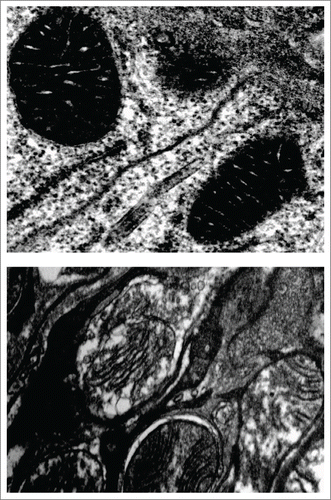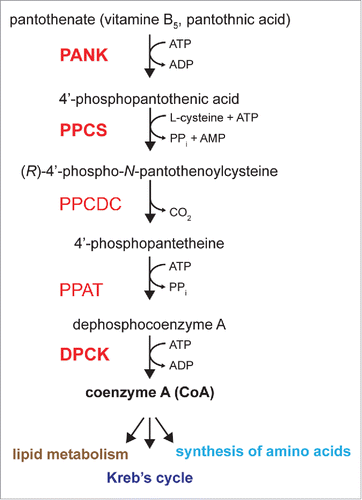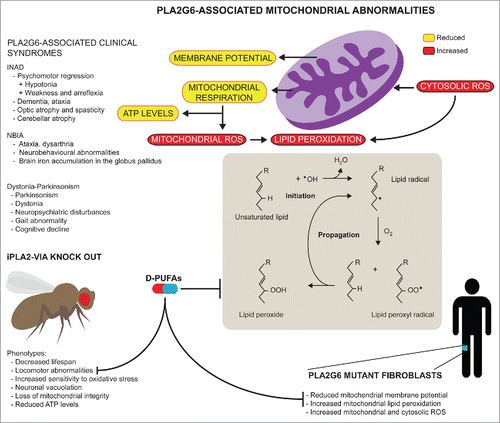Figures & data
Figure 1. The brains of aged flies lacking the iPLA2-VIA gene show degenerate mitochondria with abnormal cristae at the ultrastructural level (lower panel), compared with age-matched control (top panel).

Figure 2. De novo synthesis of CoA is a highly conserved pathway that consists of 5 enzymatic steps: pathothenic acid phosphorylation, cysteine conjugation, decarboxylation, conjugation to an adenosyl group and phosphorylation. In mammals the first step is catalyzed by PANK2 and is the rate-limiting step, while the last 2 steps are catalyzed by CoASY and involve 2 enzyme activities: PPAT (4′-phosphopantetheine adenylyltransferase) and DPCK (dephospho-CoA kinase).


